Assessing Wind Turbines for Sustainable Energy Solutions
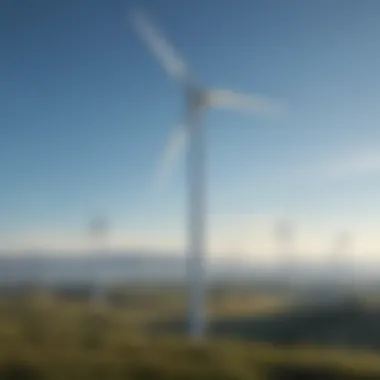
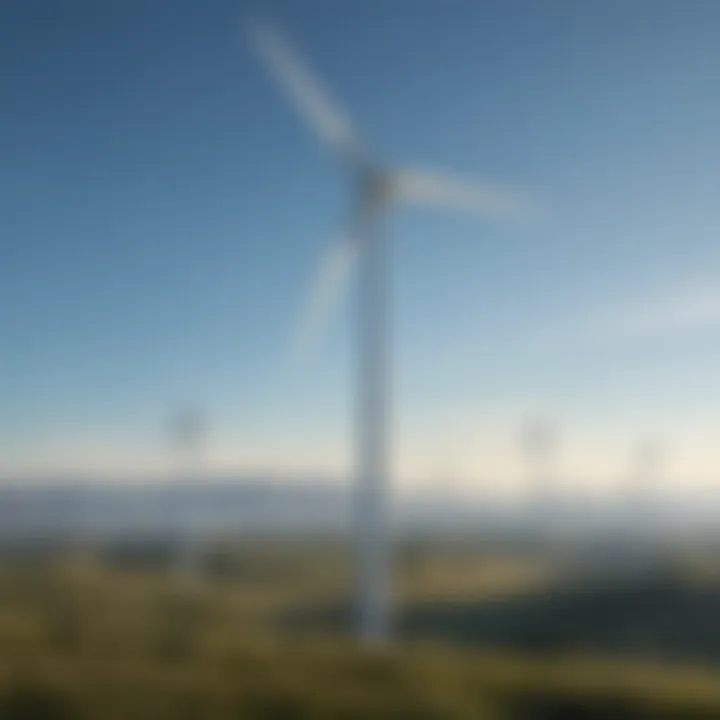
Intro
Wind energy has emerged as a pivotal player in the quest for sustainable energy solutions. With the urgency to tackle climate change, it is essential to understand the totality of wind turbines' impact. This includes analyzing their lifecycle, environmental footprint, and economic implications. Despite the advantages of wind power, there are complexities that necessitate a thorough evaluation. The discussion around sustainability encompasses numerous factors, from material sourcing to end-of-life scenarios, which can influence perceptions of their viability as a green resource.
Key Findings
Summary of the main results
The lifecycle assessment of wind turbines indicates a mixed but generally positive sustainability profile. Key findings from various studies highlight the following:
- Material Use and Resource Efficiency: Wind turbines utilize materials such as steel, concrete, and rare metals. The efficiency of material extraction and production significantly affects their environmental footprint.
- Energy Return on Investment (EROI): Wind energy systems show a favorable EROI, demonstrating that they generate substantially more energy over their lifespan than what is required for their manufacture and installation.
- End-of-Life Challenges: The disposal and recycling of turbine blades remain a prominent issue. Current technologies for blade recycling are limited, which raises sustainability questions.
"The sustainability of wind turbines involves balancing their energy production benefits against their environmental and resource costs."
Significance of findings within the scientific community
The findings contribute to ongoing discussions about renewable energy. As nations transition to greener energy sources, these insights inform policy frameworks and industrial practices. Researchers emphasize the need for improved recycling technologies and better resource management in the wind energy sector. Moreover, a clearer understanding of the ecological impacts directly influences investment decisions and long-term strategies.
Implications of the Research
Applications of findings in real-world scenarios
The implications of these findings extend beyond academic discourse. Industries that rely heavily on energy production can leverage this research to minimize their carbon footprint. For example, adopting more sustainable materials and improving recycling techniques can enhance the overall sustainability of wind turbines. Additionally, policymakers can use this information to create incentives for technology that addresses lifecycle impacts.
Potential impact on future research directions
As enhancements in technology continue, the expectation is that future research will focus on:
- Innovative Materials: Developing alternative materials that reduce environmental damage.
- Enhanced Recycling Methods: Creating systems that efficiently recycle turbine components, especially blades.
- Comprehensive Lifecycle Analysis: Expanding studies to include broader ecological and socioeconomic aspects of wind energy deployment.
Prolusion to Wind Energy
Wind energy plays a crucial role in the transition to sustainable energy systems. It harnesses the kinetic energy of the wind, converting it into electricity through wind turbines. As a renewable resource, wind energy addresses critical issues such as climate change and energy security. Its importance cannot be understated, given the immediate need for cleaner alternatives to fossil fuels.
The development of wind energy is not only a response to escalating environmental crises but also a strategy for economic growth. As countries push toward decarbonization, understanding wind energy becomes essential for students, researchers, and policymakers alike. Various elements influence the efficiency and acceptance of wind turbines, from technological advancements to regulatory frameworks.
Overview of Wind Energy
Wind energy relies on wind turbines to convert wind movement into electrical power. The process starts when wind turns the turbine blades, which spins a generator to produce electricity. This method of energy generation is significant for several reasons:
- Renewable: Wind energy is abundant and inexhaustible.
- Clean: It produces no emissions during operation.
- Economic: Investments in wind energy can lead to job creation and energy independence.
Advancements in turbine technology have increased the capacity and efficiency of wind energy systems. Countries worldwide are investing in wind farms, both onshore and offshore, to maximize their energy output.
Evolution of Wind Turbines
The design and functionality of wind turbines have seen substantial evolution.
Initially, wind energy was harnessed using simple windmills for milling grain or pumping water. The modern wind turbine has a distinct design that optimizes energy capture. Key developments include:
- Horizontal-axis turbines: This design is the most common, featuring blades that rotate around a horizontal axis.
- Vertical-axis turbines: These are less common but are praised for their ability to operate in turbulent wind conditions.
- Larger and more efficient blades: Recent innovations have led to the use of longer blades, allowing for more wind energy capture at lower wind speeds.
These advancements ensure that wind turbines are not only more efficient but also more environmentally friendly, addressing concerns related to the lifecycle assessment of materials used in turbine production. The focus on sustainability is shaping the future of wind energy.
Understanding Sustainability
To meaningfully engage with the topic of wind energy, it is essential to first understand the broader concept of sustainability. This framework not only influences environmental policies but also shapes public sentiment toward renewable technologies like wind turbines. Sustainability encompasses a balance between ecological health, economic growth, and social equity, ensuring that future generations can also meet their needs without compromising resources.
In the context of wind turbines, sustainability extends to various dimensions that warrant careful analysis. Evaluating the sustainability of wind energy involves grappling with both its advantages and limitations. Key considerations include:
- Environmental benefits: Wind energy is not a source of greenhouse gas emissions during operation, making it a cleaner alternative to fossil fuels.
- Resource efficiency: The materials used in wind turbine construction, and their sourcing impacts sustainability over the entire lifecycle.
- Economic viability: Wind energy not only creates jobs but also requires a supportive framework that balances costs and technological innovations.
- Social acceptance: Public perception and acceptance of wind farms play a critical role in their successful implementation.
Each of these factors provides insight into how wind turbines can be integrated into a sustainable energy mix.
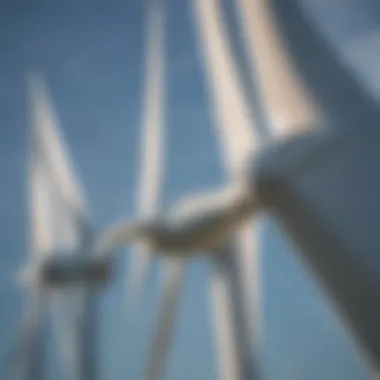
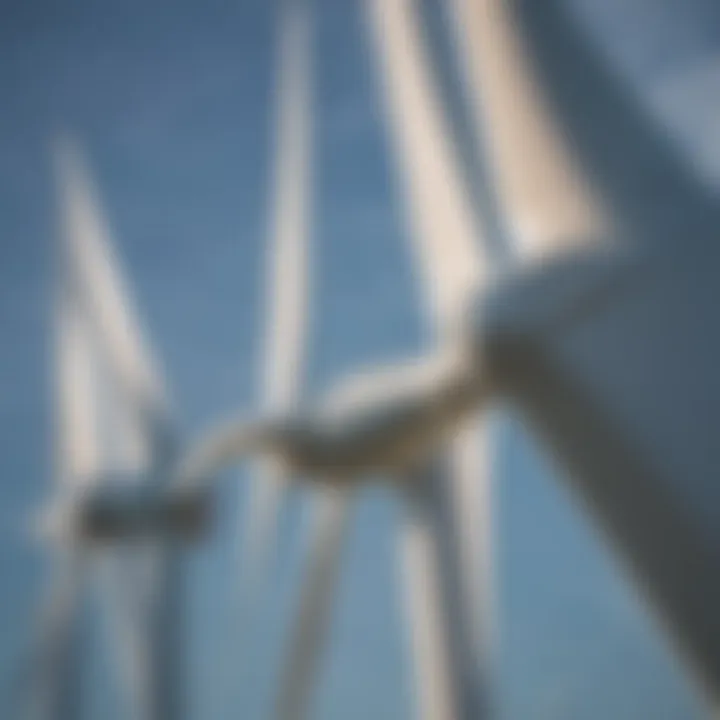
Definition of Sustainability
Criteria for Assessing Sustainability
To assess sustainability effectively, a set of criteria must be established. These criteria guide evaluations in a systematic manner. The following factors are crucial:
- Environmental Impact: Understanding the potential negative and positive effects on ecosystems and local wildlife.
- Resource Consumption: Evaluating the quantity and quality of materials used in manufacturing and operating wind turbines.
- Economic Factors: Considering job creation, energy costs, and the overall economic lift wind energy can provide to communities.
- Social Implications: Assessing how community attitudes, public health, and local culture are influenced by the deployment of wind energy technologies.
- Lifecycle Analysis: Analyzing the complete lifecycle of wind turbines from material extraction, construction, operation, and eventual decommissioning.
This systematic approach provides a comprehensive evaluation framework, allowing stakeholders to determine whether the benefits of wind energy truly outweigh the drawbacks.
"The aim of sustainability is to create and maintain the conditions under which humans and nature can exist in productive harmony, ensuring that we can fulfill the social, economic, and other requirements of present and future generations."
Overall, understanding sustainability allows us to critically evaluate the role of wind turbines in modern energy strategies, considering both their contributions and challenges in the ongoing quest for a cleaner planet.
Lifecycle Assessment of Wind Turbines
By systematically examining each stage of a wind turbine’s lifecycle, stakeholders can identify areas for improvement in terms of efficiency and sustainability. Moreover, LCA can reveal trade-offs, such as the energy invested in manufacturing against the energy generated over a turbine’s operational life. This multi-dimensional consideration ensures that decision-makers possess a holistic understanding of the implications of wind energy adoption.
Materials and Manufacturing
The materials used in wind turbines significantly influence their overall sustainability. Common materials such as steel, concrete, and fiberglass composites present unique challenges and benefits. Steel is often used for the tower due to its strength and durability. However, steel production is energy-intensive and involves considerable carbon emissions, therefore affecting the overall carbon footprint.
The manufacturing process also requires significant energy input, typically relying on fossil fuels, which may offset some of the environmental benefits during the turbine's operational phase. Innovative methods in design and material selection are essential in reducing the initial impact. Using recycled materials or bio-based alternatives can lessen resource extraction pressures and lower greenhouse gas emissions.
Additionally, local sourcing of materials and employing eco-friendly production techniques could enhance sustainability. These strategies not only support local economies but also reduce the transportation footprint associated with turbine components.
Operational Phase
During the operational phase, wind turbines generate clean energy, which is often touted as the primary advantage of wind power. Turbines can provide a substantial amount of energy without direct emissions, contributing positively to reducing reliance on fossil fuels. However, challenges remain. The variability of wind affects energy generation capacity. This intermittency requires reliance on backup systems, often using non-renewable resources.
Another concern during this phase is the maintenance required to ensure optimal performance. Regular upkeep can consume energy and resources, leading to questions about the overall sustainability during this period. Furthermore, the location of wind farms can lead to conflicts with land use and habitat, impacting local ecosystems.
Decommissioning and Recycling
Decommissioning refers to the process of removing turbines from service once they reach the end of their operational life. This phase raises pertinent questions about waste management and resource recovery. Currently, many components, especially the blades made of composite materials, present recycling challenges due to their complex structures. However, innovative recycling technologies are evolving, which can reclaim materials for reuse, mitigating environmental impact.
Proper decommissioning processes are essential to ensure that the land can be restored and reused. Minimizing the ecological footprint during decommissioning is a crucial aspect of sustainability. It impacts both land use and how future installations can proceed.
"A comprehensive lifecycle assessment is invaluable for understanding the full environmental impact of wind turbines, beyond just their contribution to energy generation."
Environmental Impacts of Wind Turbines
The discussion surrounding wind energy is often dominated by its environmental benefits, which include reduced greenhouse gas emissions and the promotion of clean energy. However, this section focuses on the environmental impacts of wind turbines. Understanding these impacts is crucial, as they represent the dual aspects of sustainability in this energy source. While wind turbines present opportunities for mitigating climate change, they also pose risks that need careful evaluation. Thus, it is imperative to analyze how wind turbines affect wildlife, land use, and their overall carbon footprint reduction capabilities.
Effects on Wildlife
Wind turbines can impact local wildlife in significant ways. Birds and bats are the most commonly discussed species affected by turbine operations. Studies indicate that these animals can collide with rotor blades, leading to fatalities. For example, raptors and migratory birds are particularly vulnerable due to their flight paths.
To mitigate these risks, many turbine operators have implemented monitoring and research programs that help to identify and address collision hotspots. Measures may include adjustments to turbine placement, operational modifications during peak migration times, and the design of specially adapted blades that reduce collision likelihood.
It is essential to acknowledge that while wind energy promotes a reduction in fossil fuel-related wildlife impacts, the construction and placement of wind turbines must be managed to minimize direct harm to local ecosystems. The balance between renewable energy development and wildlife protection remains a priority for ensuring sustainable practices.
Land Use and Habitat Modification
The installation of wind turbines often requires significant land use changes. Wind farms can lead to habitat alterations for local flora and fauna, which raises concerns about biodiversity. The footprint of a wind turbine is relatively small; however, when considered collectively across large wind farms, the cumulative effects can be pronounced.
Key considerations in this context include:
- Fragmentation of habitat: Turbines can split wildlife habitats, making it harder for species to thrive and navigate.
- Access roads and infrastructure: The construction of roads and support structures can further intrude on natural habitats, causing disruption.
- Soil erosion: Increased land disturbance may lead to soil instability, which impacts surrounding ecosystems.
The important step is to integrate thorough environmental impact assessments before construction. Such assessments help to identify critical areas for wildlife and inform site selection to minimize habitat disruption. Effective management practices and habitat restoration initiatives can also be established post-installation to offset detrimental effects on the local environment.
Carbon Footprint Reduction
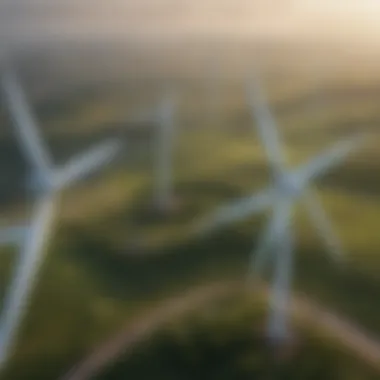

One of the primary advantages of wind turbines is their potential to significantly reduce carbon footprints associated with energy production. Unlike fossil fuels, wind energy generation produces no direct emissions. The average lifecycle greenhouse gas emissions from wind power are considerably lower than that from coal or natural gas.
The overall benefits include:
- Displacement of CO2 emissions: By using wind power, utility companies can displace substantial quantities of carbon dioxide, leading to cleaner air.
- Long-term sustainability: Once installed, wind turbines generate energy with little ongoing environmental cost.
- Energy independence: With wind energy, countries can reduce reliance on imported fossil fuels, thus enhancing energy security.
In that sense, wind turbines contribute positively to global efforts in combating climate change. However, it is essential to maintain a holistic view and continually assess the carbon footprint, including manufacturing, transportation, and decommissioning phases, which also carry environmental costs.
"Wind energy generation results in low lifecycle greenhouse gas emissions, establishing it as a viable alternative in the fight against climate change."
Ultimately, the environmental impacts of wind turbines encompass a spectrum of considerations. By closely examining the effects on wildlife, understanding land use changes, and acknowledging contributions to carbon footprint reduction, we can appreciate the complexities involved in wind energy deployment while striving for sustainable practices.
Socioeconomic Factors
Understanding the socioeconomic factors related to wind energy is essential for a full appreciation of its sustainability. Wind power not only addresses environmental issues but also has significant implications for job creation, economic growth, energy costs, and accessibility. All of these factors interconnect, revealing a complex picture of how wind turbines can influence local and national economies, as well as the energy landscape.
Job Creation and Economic Growth
The deployment of wind turbines has a direct impact on job creation. The wind energy sector requires a diverse skill set, ranging from engineering and manufacturing to construction and maintenance. In particular, the construction phase of wind farm projects is labor-intensive. Workers are needed to install turbines, lay foundations, and connect the infrastructure to the grid.
Once operational, wind farms continue to generate employment opportunities. This includes routine maintenance and services that sustain turbine performance over time. The U.S. Department of Energy noted that the wind energy industry employed approximately 116,000 people in the United States as of 2019. This number is projected to grow as more wind energy projects come online.
"Wind energy has the potential to support more than 600,000 jobs in the U.S. by 2050." - U.S. Department of Energy
Moreover, the economic growth attributed to wind energy is not limited to direct employment. Local economies often benefit from increased tax revenues and infrastructure improvements. For instance, hosting a wind farm can lead to enhanced local infrastructure such as roads and electrical grids, along with increased business for local suppliers and service providers.
Energy Costs and Accessibility
Wind energy has the potential to lower energy costs for consumers. Over the past decade, the cost of producing wind energy has declined significantly due to technological advancements and economies of scale. According to the International Renewable Energy Agency, the cost of electricity from onshore wind projects fell by about 49% globally between 2010 and 2019.
As wind energy becomes a more affordable option, it enhances accessibility to clean energy. Wind power can provide a more consistent and stable electricity source, particularly for regions that may otherwise rely heavily on fossil fuels. By reducing dependence on imported fuels, countries can enhance their energy security and achieve better price stability.
Furthermore, the diversification of energy sources through the integration of wind power can make energy systems more resilient. This resilience is vital in the face of climate change and potential supply chain disruptions.
In summary, the socioeconomic benefits of wind turbines encompass job creation and economic growth while also contributing to energy cost reductions and accessibility. These factors are crucial for evaluating the true sustainability of wind energy in our modern context.
Technology and Innovations in Wind Power
The concept of technology and innovations in wind power serves as a cornerstone in the conversation about sustainability. As society strives to find cleaner and more efficient energy sources, advancements in wind energy technology are paramount. This section delves into specific elements that illustrate the importance of these innovations for enhancing the overall efficiency and efficacy of wind turbines.
Advancements in Turbine Design
Recent years have witnessed notable advancements in the design of wind turbines. These innovations are crucial, as they directly impact the turbines' energy output and performance. Modern turbines are increasingly larger with higher capacity. For instance, newer models are equipped with longer blades that can catch more wind, thereby generating more energy. The integration of lighter materials has also improved their structural efficiency. This enhanced design reduces the overall weight and allows for easier installation and maintenance processes.
Technological progress has led to the advent of variable-speed turbines. These turbines can adjust their rotor speed in response to changes in wind velocity, thereby optimizing energy capture across a broader range of conditions. This adaptability is essential for maximizing output while maintaining operational safety. Incorporating predictive maintenance technology also enhances turbine reliability, ensuring that issues are addressed before they lead to significant downtime.
Smart Grid Integration
Integrating wind energy into a smart grid has significant implications for sustainability and efficiency. A smart grid utilizes digital technology to monitor and manage the transport of electricity from all generation sources. This means that wind-generated power can be used more effectively alongside other renewable sources like solar energy.
The benefits of smart grid integration include improved energy efficiency and reduced wastage. By analyzing data in real-time, electricity distribution can be dynamically adjusted to match consumption patterns. For example, if wind power production is high but demand is low, this energy can be stored or redirected for later use.
Furthermore, the smart grid can facilitate better communication between wind farms and utility companies. This creates a more responsive energy infrastructure that can enhance the reliability of wind energy as a power source. The ability to manage fluctuations in energy supply and integrate them with other energy sources is essential as the demand for renewable energy continues to grow.
These technological advancements not only contribute to the viability of wind energy but also position it as a competitive alternative in the global energy market.
Policy and Regulatory Framework
The policy and regulatory framework plays a critical role in shaping the landscape of wind energy sustainability. Effective policies can drive the adoption of wind technologies, ensuring that they are not only viable economically but also ecologically responsible. This section will examine the importance of government incentives and international agreements in promoting sustainable wind energy practices.
Government Incentives
Government incentives are vital to stimulate the growth of wind energy. These incentives can take various forms, including tax credits, grants, and subsidies. They effectively reduce the financial burden on both manufacturers and consumers, making wind energy more accessible and appealing.
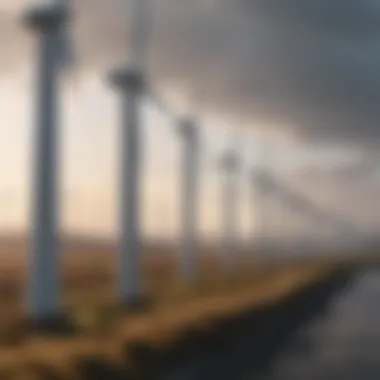
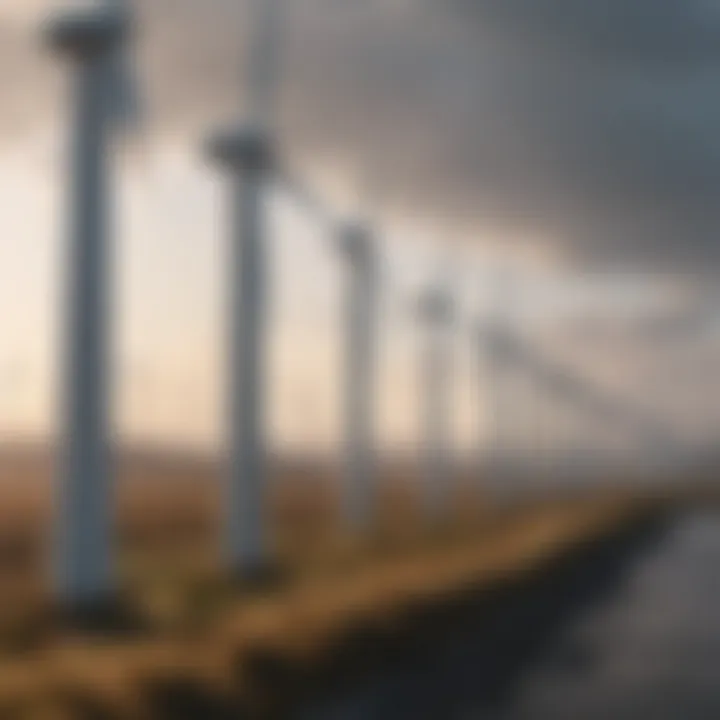
- Tax Credits: Incentives such as the Federal Investment Tax Credit in the U.S. allow wind projects to deduct a significant percentage of their investment from federal taxes. This can lead to substantial savings, encouraging more investments in renewable energy.
- Grants and Subsidies: Many governments offer direct grants or subsidies to assist in the development of wind farms. This financial support can cover part of the initial installation costs, making it easier for new projects to commence.
- Feed-in Tariffs: These guarantees that producers are paid a fixed price for the electricity they generate. This security encourages long-term investments in wind farms.
These various incentives not only support the growth of the wind energy sector but also align with broader climate goals, helping to reduce reliance on fossil fuels.
International Agreements on Renewable Energy
International cooperation is crucial for the advancement of wind energy sustainability. Agreements between countries can facilitate the sharing of technology, best practices, and funding. Notable agreements include the Paris Agreement and the United Nations Sustainable Development Goals.
- Paris Agreement: This landmark accord aims to limit global warming to well below 2 degrees Celsius. By emphasizing renewable energy, including wind, it encourages nations to transition away from carbon-intensive sources.
- Renewables 100%: This initiative promotes 100% renewable energy commitments from cities and businesses worldwide. By working together, countries can demonstrate how wind energy contributes to a sustainable future.
- International Energy Agency (IEA): This organization plays a significant role in promoting global energy cooperation. It provides valuable data and analysis, helping nations to formulate effective energy policies.
"International agreements foster collaboration, making knowledge transfer and funding accessible for wind energy projects across the globe."
Challenges Facing Wind Energy
Understanding the challenges that wind energy faces is essential for assessing its overall sustainability. The obstacles encountered not only affect the operational efficiency of wind turbines, but also influence public perception and policy development surrounding this renewable resource. It is critical to analyze these issues to inform future advancements in technology and regulatory frameworks. Two significant challenges are intermittency and reliability, alongside public opposition and concerns.
Intermittency and Reliability
Intermittency is a predominant issue affecting wind energy. Wind does not blow consistently in all places and at all times. This inconsistency leads to fluctuations in energy generation. As a result, the reliance on wind power alone can create instability in the energy grid. Energy producers must incorporate backup solutions, such as natural gas or storage systems, to ensure a steady supply when wind generation drops.
Several methods exist to mitigate this variability. Smart grid technologies are being developed to improve forecasting and grid management. These systems allow for increased flexibility in responding to changes in wind patterns. Also, coupling wind energy with other renewables—like solar power—can partially alleviate some reliability issues. Achieving a balanced energy mix can help buffer fluctuations.
Evolving storage technologies are another critical factor. Energy storage systems, particularly battery technologies, are advancing rapidly. However, they still tend to come with high costs and varying efficiencies. Addressing these challenges is crucial for making wind energy a more reliable power source.
Public Opposition and Concerns
Public opposition presents a significant barrier to the expansion of wind energy projects. Communities often raise concerns about visual impact, noise pollution, and potential negative effects on local wildlife. These concerns can lead to substantial delays in project approvals and increased costs for developers.
To enhance public acceptance, it is necessary to engage local communities in the planning processes. Transparent communication about the benefits and drawbacks of wind energy can foster understanding. Addressing specific local concerns, such as land use and wildlife protection, is an essential part of the conversation.
In addition, educational initiatives can help demystify wind energy. Informing the public about how wind turbines work, their contributions to reducing carbon emissions, and their role in energy independence can shift perceptions. Moreover, demonstrating that wind projects can coexist with agricultural and recreational land uses may alleviate fears about land degradation.
"Sustainability is not merely about reducing emissions but also about gaining public trust and securing community willingness to embrace renewable projects."
In summary, tackling the challenges of intermittency, reliability, and public opposition is vital for the advancement of wind energy. As technology improves and communities become more informed, it is hopeful that these challenges can be managed effectively, allowing for broader adoption of wind energy.
Future of Wind Energy
The future of wind energy is crucial in assessing the sustainability of wind turbines. Not only does it encompass advancements in technology, but it also reflects changes in policy, global adoption rates, and the role of wind energy within a broader context of renewable sources. As the world grapples with climate change and shifts toward cleaner energy, wind power presents a viable solution. But understanding how this sector evolves is necessary for gauging the long-term sustainability of wind projects.
Trends in Global Adoption
The global landscape for wind energy continues to develop rapidly. Many countries are investing heavily in wind power as part of their energy transition plans. Notable trends include:
- Increasing Capacity: Many nations are expanding their wind energy capacity year on year. For example, countries such as China and the United States lead the world in installed wind power capacity.
- Cost Reduction: The cost of wind energy has seen significant decreases due to technological advancements and increased competition in the market. This makes wind power more accessible.
- Policy Support: Government incentives and regulations favoring renewable energy sources encourage investment in wind energy projects. Policies promoting clean energy goals are now commonplace in developed and developing nations.
Such trends not only demonstrate the growing acceptance of wind energy but also reflect a collective effort toward sustainability. As adoption spreads, so does the potential for innovation.
Integration of Wind Power with Other Renewables
The integration of wind power with other renewable energy sources is emerging as a priority for achieving a sustainable energy mix. This approach can offer several benefits:
- Enhanced Reliability: Combining wind energy with solar power can mitigate the intermittency issues that each type faces individually. When the wind isn’t blowing, the sun may still shine, providing a consistent energy supply.
- Grid Stability: A varied energy portfolio supports grid stability. Diversifying energy sources can reduce stress on electrical systems during peak demand periods.
- Research and Innovations: Ongoing research into hybrid systems that combine wind and solar technologies fosters innovation. These systems often leverage smart grid technology to optimize energy distribution and storage.
Overall, the future of wind energy looks promising. Its adaptability to market trends, policies, and technological developments indicates that it will play a significant role in global energy solutions.
The End
In the landscape of renewable energy, the sustainability of wind turbines is a crucial topic. Understanding the various elements involved in their lifecycle, from manufacturing to decommissioning, provides insight into their overall viability. Wind energy positions itself as a cleaner alternative, aiming to reduce dependency on fossil fuels while addressing climate change. However, the associated environmental impacts and resource demands cannot be entirely overlooked. In this closing section, we reassert the importance of scrutinizing the sustainability claims surrounding wind turbines.
Summarizing Key Points
The evaluation of wind turbine sustainability hinges on several key factors:
- Lifecycle Assessment: This includes an examination of raw materials, energy consumed during manufacture, operational efficiency, and disposal or recycling methods.
- Environmental Impact: Wind turbines have implications for local wildlife and ecosystems. Assessing bird and bat mortality rates is essential for understanding their ecological footprint.
- Economic Factors: Job creation, investment returns, and long-term economic implications influence perceptions of sustainability. Government incentives also play a pivotal role in promoting wind energy.
- Social Acceptance: Public sentiment can significantly sway the progress of wind energy projects. Opposition due to aesthetics or perceived risks must be addressed in planning and development.
Final Thoughts on Wind Turbines and Sustainability
The quest for renewable energy solutions brings wind turbines into the spotlight. While they stand as a promising component of the cleaner energy transition, their sustainability is nuanced. It is vital for students, researchers, educators, and professionals to continue evaluating the impacts and benefits. Overall, sustainable practices in both the deployment and operation of wind energy systems are essential for optimizing their positive impacts.
"A comprehensive understanding of sustainability requires continuous assessment and adaptation, particularly in the field of renewable energy."







